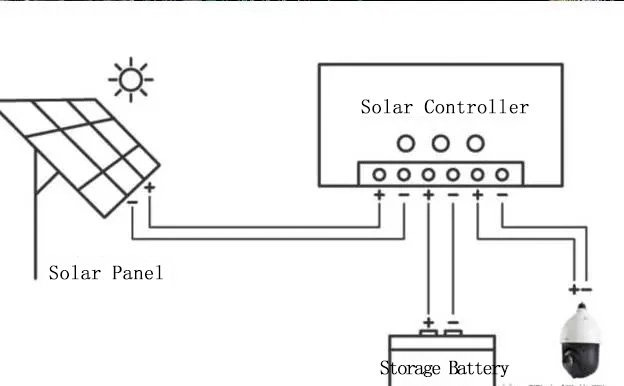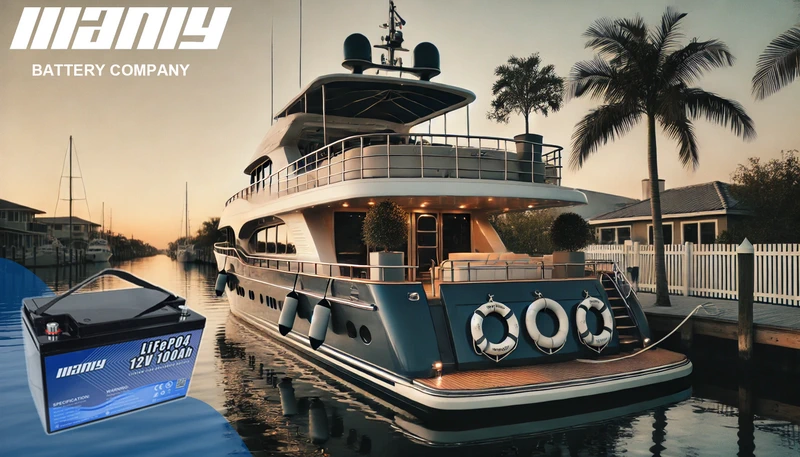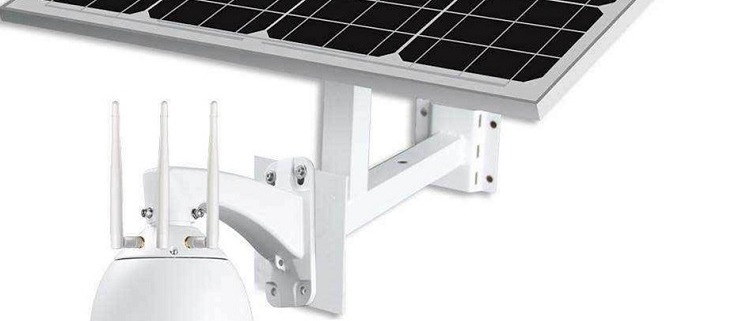What Type of Battery is a Marine Battery? A Detailed Breakdown
Table of Contents
- What Type of Battery is a Marine Battery? A Detailed Breakdown
- What is a Marine Battery?
- Different Types of Marine Batteries and Their Features
- The Best Choice: LiFePO4 Batteries for Marine Use
- Why LiFePO4 Batteries Are the Best Marine Batteries?
- Conclusion
- FAQ
- Hot Search
- The Working Principle of Solar Monitoring System
- Introduction of Solar Monitoring System
- Solar Monitoring System vs Tradtional Monitoring System
- Reasons For The Rise Of Lithium Battery Raw Materials
- Thailand Customer 170pcs 48V 30ah Electric Vehicle Battery Prepare Packaging
Maintaining a consistent and dependable boating experience depends on choosing the right marine battery. Whether you use a trolling motor, start your engine, or run electronics, the appropriate battery type will make all the difference. The several choices for batteries make many sailors find it difficult to choose the right one.
This article will break apart lead-acid, AGM, gel, and LiFePO4 batteries as well as other types of marine batteries. You will learn every type in great depth, including its benefits, drawbacks, and optimal uses. By the conclusion, you will understand the reason LiFePO4 batteries are the best fit for marine applications.
What is a Marine Battery?
Designed especially to withstand adverse sea conditions, a marine battery is Unlike automobile batteries, which only provide short bursts of electricity to start an engine, marine batteries must deliver constant power for lengthy durations while tolerating vibrations, dampness, and temperature variations.
- Usually driven by its intended use, marine batteries are categorized:
- The starting battery runs the boat motor. It gives a brief, sharp boost but lacks long-term vitality.
- Deep-cycle batteries run constantly for lights, fish finders, and trolling motors among other equipment.
- A dual-purpose battery sometimes performs worse than dedicated beginning and deep cycle batteries, even if it aims to combine two uses.
These classification indicate the use of a marine battery, although the most important factor influencing battery performance is battery chemistry. Chemistry of a battery determines its general performance, longevity, efficiency, and maintenance requirements.
Different Types of Marine Batteries and Their Features
The several kinds of marine batteries are listed below, together with their characteristics:
Lead-Acid Marine Batteries
Lead-acid batteries have been used in marine conditions as they have been rather competitively priced and widely available for decades. These batteries chemically react with lead plates and sulphuric acid to generate power.
Flooded Lead-Acid (FLA) Batteries
Flooded lead-acid batteries are the most classic form. They demand consistent maintenance, including topped off distilled water. They are heavy, require ventilation, have a shorter lifetime than other battery types even if they are economically priced.
Sealed Lead-Acid Batteries
Lead-acid batteries sealed eliminate maintenance needs and are spill-proof. Two most widely used variants that improve performance over typical flooded lead-acid batteries are AGM (absorbed glass mat) batteries and gel batteries.
Advantages of Lead-Acid Marine Batteries
Lead-acid batteries are reasonably cheap and rather numerous. Their great starting current makes them worth using for engine cranking.
Disadvantages of Lead-Acid Marine Batteries
Lead-acid batteries need regular maintenance, weigh a lot, and charge slowly. Usually running for two to four years, their lifetime is short; they break down upon discharge below 50% capacity.
AGM (Absorbed Glass Mat) Marine Batteries
AGM batteries are spill-proof and maintenance-free by absorbing the electrolyte using fiberglass mats, therefore improving traditional lead-acid designs.
How do AGM Batteries Work?
By immobilising the electrolyte inside the glass mat, AGM batteries reduce the possibility of leaking and hence maximise power efficiency. Since this structure lets for better resistance to vibrations and faster charging periods, AGM batteries are a more durable replacement for flooded lead-acid batteries.
Advantages of AGM Marine Batteries
Zero maintenance and faster charging than other lead-acid models describe AGM batteries. Their lifetime is between three and six years, and they have more resistance to deep discharges.
Disadvantages of AGM Marine Batteries
AGM batteries remain heavier than lithium alternatives even with their superior performance. On a tight budget, they also appeal less to boaters since they cost more than flooded lead-acid batteries.
Gel Marine Batteries
Gel batteries use liquid electrolytes from a silica-based gel. Less leaks and greater deep discharge performance are made possible by this chemical composition.
How do Gel Batteries Work?
The gel-based electrolyte lowers chemical reactions, therefore reducing the possibility of overcharging or deep discharge. Applications needing constant, long-term power will find ideal use for these batteries.
Advantages of Gel Marine Batteries
Gel batteries resist high temperatures, maintain a longer lifetime than flooded lead-acid batteries, and require no maintenance.
Disadvantages of Gel Marine Batteries
The slow charging rate of gel batteries is its biggest drawback. Furthermore expensive than AGM and flooded lead-acid batteries are they are. Less forgiving than other battery kinds, overcharging can damage a battery permanently.
The Best Choice: LiFePO4 Batteries for Marine Use
The most intelligent and powerful marine batteries are LiFePO4 (Lithium Iron Phosphate). Unlike lead-acid batteries, which rely on chemical interactions between lead and acid, they offer constant and dependable power by means of lithium-ion technology.
Why LiFePO4 Batteries are Superior?
Among their most important benefits are LiFePO4 batteries’ extended lifespan. Lead-acid batteries run two to six years; LiFePO4 batteries can run ten years or more. Since they weigh up to 70% less than lead-acid batteries and are more easily handled, they also greatly improve boat performance.
Charging time offers still another major advantage. Five times faster charging of LiFePO4 batteries than with lead-acid batteries Unlike lead-acid batteries, which have to be kept above 50% charge, they also enable total discharges free from battery damage.
Are There Any Drawbacks to LiFePO4 Batteries?
The sole negative of LiFePO4 batteries is their starting cost. For seasoned sailors, however, they are the most affordable choice because of their long lifetime, fast charge times, and low maintenance needs.
Why LiFePO4 Batteries Are the Best Marine Batteries?
LiFePO4 batteries have long-term benefits above all other battery models, even if their initial expense makes many sailors unwilling to switch. Boats carrying LiFePO4 batteries had 30% longer running lifetime on electronic systems and trolling motors, according a study by marine engineers.
Savings in weight also improve performance. LiFePO4 technology lets a boat greatly reduce the weight of its battery, therefore enhancing fuel economy and general maneuverability. Boaters looking for dependability, fast charging, and long-lasting performance would best invest in LiFePO4 batteries.
Conclusion
The perfect sailing voyage depends on selecting the right marine battery. Though lead-acid, AGM, and gel batteries are still somewhat popular, none give the efficiency, lifetime, and long-term savings LiFePO4 batteries offer.
LiFePO4 batteries from MANLY Battery provide the finest answer if you want a dependable and high-performance marine battery. Their innovative lithium technology guarantees exceptional energy economy, therefore assuring that your boat keeps running without the trouble of regular replacements.
For premium-quality marine batteries, visit MANLY Battery today and experience the next generation of marine power solutions.
FAQ
1. Is a deep cycle battery the same as a marine battery?
Let’s clarify: a deep cycle battery and a marine battery aren’t the same, although they have similarities. Here’s why:
A deep cycle battery provides a steady power flow over an extended period. It’s designed for applications that need consistent energy, like golf carts, RVs, or renewable energy systems. These batteries are built to handle repeated discharges and recharges without losing performance.
On the other hand, a marine battery is specifically made for boats. However, marine batteries come in two types: starting and deep cycle. A starting battery delivers a quick surge of power to start the engine, while a deep cycle marine battery powers your boat’s electronics and other devices.
So, while some marine batteries are deep cycle, not all deep cycle batteries work as marine batteries. If you’re choosing a battery for your boat, ensure it’s designed for marine use to get the most reliable power.
2. What are the three types of marine batteries?
Marine batteries come in three main types, each serving a different purpose. Understanding their roles helps you pick the right one for your boat:
- Starting Batteries: Starting batteries provide a quick burst of power to start your engine. They’re all about delivering a high-energy jolt for a short time. These batteries are not designed to power other devices, so they focus only on getting your engine running.
- Deep Cycle Batteries: Need power for your boat’s electronics, trolling motor, or other accessories? Deep cycle batteries are your answer. They deliver steady, long-lasting energy and can discharge and recharge multiple times without losing capacity. Perfect for extended trips or when you’re off the grid!
- Dual Purpose Batteries: As the name suggests, dual purpose batteries combine the functions of both starting and deep cycle batteries. They give you enough power to start your engine and supply energy to your accessories. They offer versatility but may not provide as much power as a dedicated starting or deep cycle battery.
Hot Search
Marine Lithium Battery Battery Manufacturer
Hello
The working principle of the solar energy monitoring system is that solar panels absorb light energy and convert it into electrical energy, and then divide the electrical energy through the controller, provide it for direct use by monitoring and store it in the storage battery, and provide long-lasting power for monitoring.
Introduction of Solar Monitoring System
Table of Contents
I. Solar Power Equipment
1. Solar Panels
(1) Types
The materials of solar panels primarily include: monocrystalline silicon, polycrystalline silicon, and amorphous silicon.
- Monocrystalline Silicon Solar Panels: Photoelectric conversion efficiency is around 15%, with the highest reaching 24%. This is the highest conversion efficiency among all types of solar panels, but they are more expensive to manufacture. Their typical lifespan is about 15 years, with the maximum being around 25 years.
- Polycrystalline Silicon Solar Panels: Photoelectric conversion efficiency is around 12%, and they’re somewhat cheaper than monocrystalline silicon panels. Their lifespan is shorter than monocrystalline silicon.
- Amorphous Silicon Solar Panels: Can generate power even in weak light conditions. Internationally advanced amorphous silicon solar panels have a photoelectric conversion rate of about 10%, and this efficiency decreases over time.
(2) Parameters
- Peak Power: Refers to the power of the solar panel when sunlight is strongest, measured in watts (W).
- Working Voltage
- Dimensions: Refers to the size of the solar panel.
- Photoelectric Conversion Rate: The efficiency of the solar panel in converting sunlight into electrical energy.

2. Solar Controller
The full name is the solar charge-discharge controller. It is used in solar power generation systems to automatically control the charging of the battery by multiple solar cell arrays and the power supply of the solar inverter load by the battery. It specifies and controls the charging and discharging conditions of the battery, and controls the energy output of the solar cell modules and batteries to the load according to the power requirements of the load. It is the core control part of the entire photovoltaic power supply system.
3. Storage Battery
As the name suggests, a storage battery is used to store electricity. It primarily stores the electrical energy converted by solar panels and can be used multiple times in a cycle. In a comprehensive monitoring system, some equipment requires a 220V or 110V AC power source, while the direct output of solar power is typically 12V DC, 24V DC, or 48V DC. Therefore, to provide power to 220V AC or 110V AC devices, the system must include a DC/AC inverter to convert the direct current produced by the solar photovoltaic power system into alternating current.
- Battery Capacity: = Discharge Current × Discharge TimeMeasured in AH: For example, 50AH means it can provide a current of 50A for 1 hour.
- Voltage: Monitoring systems are generally equipped with 12 volt lithium battery.
II.The Working Principle of Solar Monitoring System
1. When the sun is strong, the controller divides the electric energy converted by the solar panel into the one used for monitoring and the one stored by the battery;
2. When the sun is weak, the controller will take out the electric energy from the battery and provide it for monitoring when the electric energy converted by the solar energy is not enough to monitor the normal use;
3. During nighttime or on cloudy days when sunlight conditions are unfavorable, the energy storage system takes over to power the video surveillance.
In addition to sparsely populated outdoors, roads, home courtyards, scenic spots and other places can also be installed with solar monitoring, as long as the solar panels are not blocked by obstructions. It should be noted that the installation of solar monitoring should pay attention to the solar panels that can fully receive the sunlight, the battery also needs to be replaced regularly, and the waterproof cover should be fixed to prevent losses caused by water ingress.

Solar Monitoring System vs Tradtional Monitoring System
- Addresses the monitoring needs of remote areas, as well as regions with no humans, electricity, or network.
- Economical, practical, and reliable.
- Low construction cost, quick installation, short construction time, good safety, and minimal maintenance costs.
- Operates normally during rainy days. Solar power doesn’t solely depend on sunlight to generate electricity; any form of light will do. The system has energy storage devices to ensure it works at night or on cloudy/rainy days.
- The equipment operates with automatic control, capable of unmanned operation and wireless remote monitoring.
- Utilizes specialized monitoring controls and inverter systems. It doesn’t interfere with regular signal transmission and reception for monitoring. Management and maintenance are simple, convenient, and operational costs are very low.
- Employs standalone solar power for wireless transmission, including 4G and WiFi, fully wireless.
- Components are flexible, compact, and easy to install and network.
- Provides both alternating current (AC) and direct current (DC) power supplies to meet various load electricity needs.
- Uses a maintenance-free waterproof lithium battery as the energy storage device, operating temperatures ranging from -40℃ to +60℃, characterized by long life and high performance.
As the market for new energy vehicles and lithium batteries continues to be hot, the prices of upstream raw materials for lithium batteries have risen rapidly. Among them, the cathode material is the most critical raw material for lithium batteries, including lithium carbonate and lithium hydroxide. At present, lithium carbonate, lithium hydroxide, electrolytes, etc. have all increased to varying degrees, and some raw materials have increased by more than 200% compared with the beginning of this year.
Lithium batteries are widely used in electronic products, power storage, and new energy vehicles. Since the beginning of this year, while prices have continued to rise, “difficult to find a single product” has become the current status of raw material procurement by lithium battery companies. Many raw material manufacturers have placed orders for next year.
September to November is an intensive procurement period for my country’s new energy vehicles to stock up at the end of the year. It is expected that during this period, the overall market demand will increase again.
At present, the domestic annual production capacity of lithium carbonate is about 340,000 tons, and the annual production capacity of lithium hydroxide is about 230,000 tons, but the actual output is lower than the production capacity.
Thailand customer 170pcs 48V 30ah Electric vehicle battery ,Prepare packaging.
This batch of 48V 30ah Electric vehicle battery adopts a waterproof design for the customer’s application field, reaching the IP65 waterproof level.
If you have any 48V 30ah Electric vehicle battery projects , please don’t hesitate to call MANLY here or email at [email protected].







